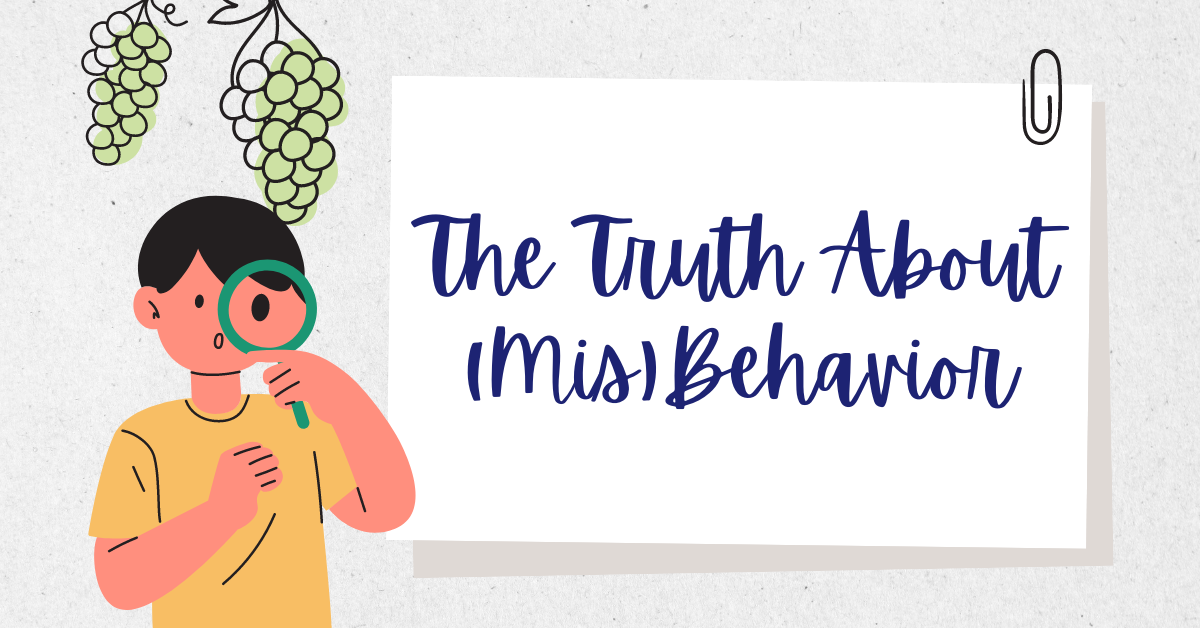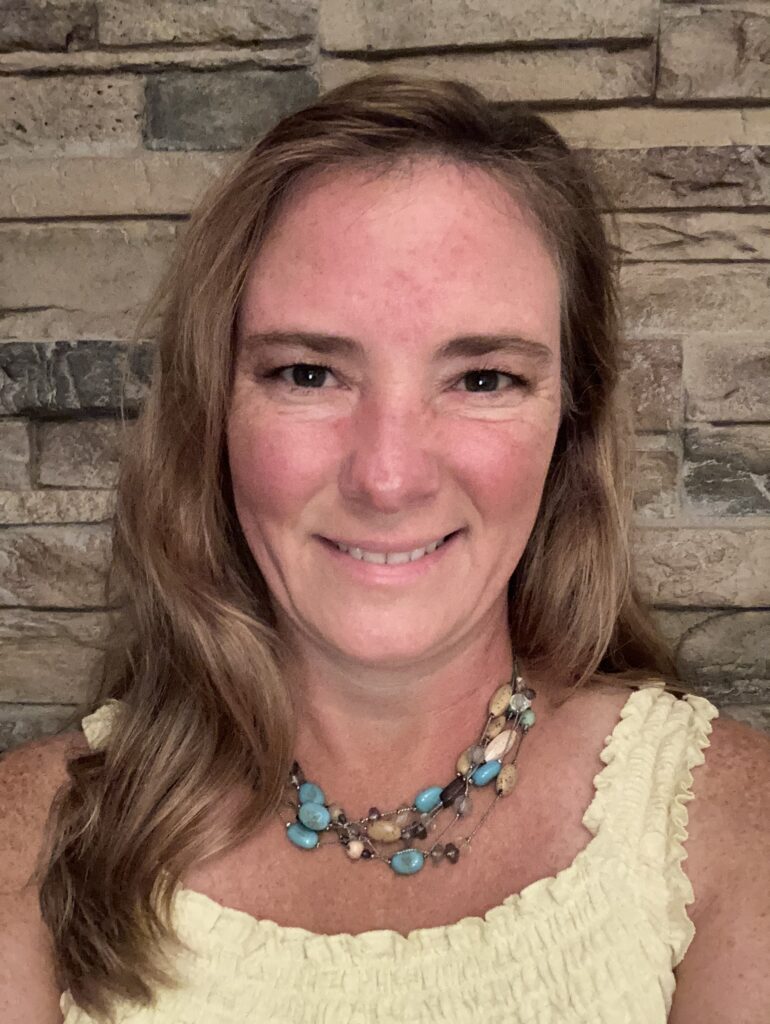 Your kid’s running through the store or yelling his head off indoors or being embarrassingly rude to others. Your dog tears up a couch cushion or uses the bathroom in the house or jumps the fence every time you turn your back. Your cat may or may not choose to use the litter box or unroll an entire roll of toilet paper or get on the kitchen counter right in front of you.
Your kid’s running through the store or yelling his head off indoors or being embarrassingly rude to others. Your dog tears up a couch cushion or uses the bathroom in the house or jumps the fence every time you turn your back. Your cat may or may not choose to use the litter box or unroll an entire roll of toilet paper or get on the kitchen counter right in front of you.
You have your own behavior issues. Maybe your often late or start but don’t complete projects or eat whatever’s in front of you. Oh, wait, that’s me.
Perhaps you run stop lights or get so engrossed in your shopping that you’re always in people’s way or your boss has to keep on you to get that report to her.
These are misbehaviors we’ve likely all experienced or struggled with. As frustrated as we can get with others misbehaviors, we all have them. Why is that, when we know how infuriating it can be, both for ourselves and those around us? And why do our kids and pets sometimes do something they know they’re not allowed to do, then defiantly stare at us, as if to say, ‘What are you going to do about it,’?
Getting to The Root
Behaviors are informed by emotion. You feel, then act. Generally, we’re so out of touch with our emotions, we often are 100% unaware of the emotion preceding the behavior. If you’ve ever kayaked, you can think of the water as a body of emotions. The water moves this way, then your boat changes course in response. The water moves that way, then your boat changes course again. If the emotional body is churned up, your boat responds by rocking and rolling.
We know this on some level. Over time we decipher particular tendencies. For example, there was a day, a moment, when it clicked. I struggle with transition. I’m fine doing a given activity. But I settle into it so deeply, when it comes time to wrap it up and transition to the start of the next activity, I can have meltdowns like a two-year-old. Upon closer inspection, those times of transition are filled with insecurity. What needs to be done to wrap up this activity? Am I at a good stopping point? Do I have time to work on it a little longer to get to a better stopping point? This is a terrible stopping point; it’ll be so confusing to pick up again. Did I miss anything? What is needed to start the next thing? I stayed with the first thing too long; now this activity will be rushed. On and on. This building of insecurity, frustration, anxiety lends to me snapping at others, slamming a cabinet or door harder than intended, making more mistakes and other misbehaviors.
The Job of Your Emotions
Emotions are often villainized in our culture. We’re taught to suppress, ignore, distract, numb, whatever it takes to JUST NOT FEEL. Unless it’s the ‘good’ emotions, of course.
A relative paid a visit once when he knew I was going through some big things and having a tough time. His adamant advice was ‘to leave it at the foot of the cross’. My protestations that I was doing that in my own way were dismissed. “No, if you were, then you’d be over this. You wouldn’t still be sad and angry.” Sigh.
There are no such thing as good or bad emotions. That’d be like saying my stomach’s good but man, spleens suck. Doesn’t make sense, right? All our organs have very specific jobs to do, as does every external body part and every emotion. Part of the confusion is that until now, our sciences have focused largely on the tangible. The ability to ‘see’ atomic structures led to unimaginable breakthroughs. And now that emotions and other unseen aspects of the human organism are being studied more, we’re seeing unimaginable healing take place.
There’s also no way around emotions – the only path is through. Here’s how it works.
Every emotion has a very specific job. Anger for example, let’s us know when our boundaries are threatened. Sadness means we’re in the process of letting go of something or someone.
Let’s say you’re struggling with a difficult problem. You experience both anger and sadness a lot. It’s uncomfortable, sometimes scary. Culturally, we’re taught those are the bad ones and we need to just get rid of them. We emotionally eat, binge watch TV, shop, drink, scroll of Facebook, play games on our phones, obsess over the news. You see I’ve just described most of America. You see those are also all misbehaviors in response to emotions.
What if you felt into the anger and the sadness? EGADS!
Feeling into any emotion, may at first intensify it. The more severely you suppress and numb out your emotions, the more intensely they’ll flare. But it’s temporary. Emotions are watery things, so I use water analogies a lot. Consider you’re at the beach and a huge wave pummels you. It tosses and churns you up the beach. Your head’s underwater, you can’t breathe, you can’t tell which way is up. (Sound like a panic attack?) But you know it’s just a wave that’s knocking you around, it’ll subside, you’ll surface sputtering and laughing, only to be hit by the next wave.
Emotions move in waves too. When you feel into an emotion, you’re catching the rising action of the wave and can rest in the knowledge, that no matter how big this wave gets, no matter how much it tosses you across the beach, it will subside and you will be ok. If you’ve ever meditated, bring everything you’ve learned to your practice of feeling your feelings. Notice. Don’t latch onto what’s happening. Just notice it’s happening, let it happen, watch as it increases, watch as it crests, watch as it subsides. No story to explain it. No judgement. This is just what is happening now.
Once each wave is smaller and smaller and you’re feeling more stable, lean in to hear the lesson. This precise emotion is here to tell you something important. If anger likes to talk about boundaries, what boundary is being threatened or crossed? If sadness is about letting go, what is it you’re ready to let go of, even if it hurts? What is no longer serving you?
Deciphering Behavior
I will argue there’s no such thing as ‘mis’behavior. Now that you know that emotions drive behavior, let’s reexamine. If you lean into and feel your emotion and catch its message, they’ll be no need for eating, shopping, drinking, binge watching tv, etc. Those unwanted behaviors are the next step of your amazing system sounding off warnings that all is not well.
The choice is:
There’s a problem. An emotion comes to inform you that there’s a problem. You feel the emotion and here the message and choose beneficial behaviors accordingly.
OR.
There’s a problem. An emotion comes to inform you that there’s a problem. You suppress and numb out by eating, sleeping, distracting, yelling, etc. Skipping the feeling and hearing the message, takes you straight to the next failsafe of harmful behaviors – behaviors that eventually will be so disruptive, you’ll have no choice but to pay attention. But the behaviors are not the problem. The suppression and numbing of emotions is.
When you’re cat jumps on the counter and stares at you, perhaps she needs some extra attention. When your dog poops in the house, perhaps there’s been commotion lately that has him feeling nervous. When your kid yells and screams inside, maybe she’s missing you now that you’re working overtime. When your boss has to keep on you to do your job, maybe you’re feeling rundown and need extra self-care.
Kids and other social animals need help navigating emotions sometimes. We as their parents owe it to them to do our homework to better understand what that looks like. But we as adults need help too. We need education and we need other people to lean on for support and to hold us accountable.
Now What?
A great first step that I strongly recommend is the book, The Language of Emotions: What Your Feelings Are Trying to Tell You by Karla McLaren.
If you still need help, that’s where I come in. I’ve created lots of free downloads to help with various aspects of self-care and holistic wellness. Check out past blog posts for many of them. Coming soon, there will be a Free 5 Week Writing Workshop that walks you through my 4 Pillars Foundation Model of Wellness.
If you find your still struggling or you hit a plateau and can’t figure out what to do next or you’d like support going deeper, schedule a free Discovery Session. This is a full hour for us to talk about you, where you are and what you’re looking to achieve. We’ll decide together if we’re a good fit and how best for you to move forward. We can take a deep dive into my 4 Pillars Foundation Model of Wellness then move into freestyle one on one coaching. The Foundations Model teaches you core skills you’ll need to heal past hurts, meet current challenges and built a brighter future.
While most of these suggestions are free or inexpensive, I want you to know you’re not alone. For increased connection, support and ideas, follow me on Facebook and/or Instagram, subscribe to my blog, sign up for my newsletter and feel free to email me. Maybe you don’t need a full-blown coaching relationship right now, maybe you just need a sounding board now and then. I’m here for you.
OK. That was a lot. Just to give you one last quick tip (that honestly I could write a whole other article on…or book), now that you can better translate your and others behaviors, meet them with empathy and compassion. Those are big, big words and I know you’ve got this!
Resources
The Language of Emotions: What Your Feeling Are Trying to Tell You by Karla McLaren.
5 Mindset Hacks to Living Your Big Life blog with freebie Big Life Mindset Hacks
Body Talk blog with instructions to do body scans, a form of meditation.
Somatic Writing blog with instructions.
21st Century Brand of Self-Esteem blog with freebie Daily Affirmations for Self-Esteem Checklist
6 1/2 Ways to Calm Your Nervous System Through Writing blog
If you’re interested in the Free 5 Week Wellness Writing Workshop, sign up HERE and you’ll be emailed when it’s released.
Lastly, book your free Discovery Session anytime to find out how we can work together.







